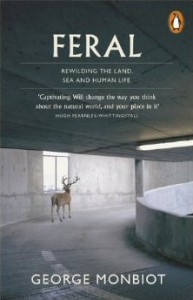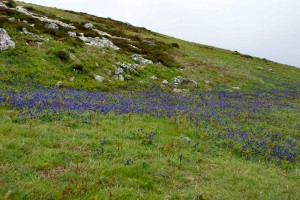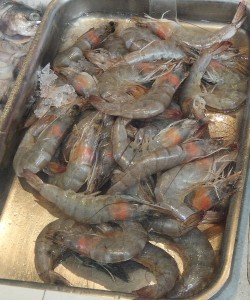
Well, what a terrifically interesting book. I’ll say at once that while I’m right up there with Monbiot’s dream of a well-rewilded landscape (with a bit of wildwood near you for peace and refreshment from the electronic world), Monbiot is so bold in his arguments that it’s impossible to agree with everything he writes.
The starting point for this book is that we all feel the need to be free of our society’s stifling artificiality. We quietly hate being stuck on commuter trains, boxed into offices, jammed onto pavements, trapped in front of screens, permanently at the beck and call of electronic devices and social media. Monbiot is very funny on this sad topic. He uses as evidence not all this stuff from today’s world – you know it already – but the results when people from our world have gone into tribal societies: they uniformly want to stay. Conversely, when tribespeople have visited our world, they always want to go back home. Wild, 1. Civilised, 0.

Monbiot moves to Wales, near the bare open heathery uplands of the Cambrian Mountains, that everybody tells him are beautiful. He finds what every hillwalker (myself included) must have noticed without thinking too much of it, that there are very few species up there: few flowers (save Tormentil, a marker of overgrazing as sheep won’t eat it), few insects, few birds.
“I hate sheep”, writes Monbiot, startlingly: no echoes of Wainwright here, no grudging admiration of those toughest of hillwalkers, the mountain sheep like the Herdwicks of Lakeland. He hates the bare sward, devoid of trees. Trees? On the mountains? Yes, he shows us the record from pollen cores: from the end of the last ice age, the Welsh uplands were covered in forest – hazel, oak, alder, willow, pine and birch. “By 4,500 years ago, trees produced over 70 per cent of the pollen in the sample.” Then, Neolithic farmers cleared the wildwood, and by 1,300 years ago the trees had gone, replaced by heather. And domestic animals, sheep and cattle, replaced the great beasts of the forest: the elk, bear, wolf, wild boar, lynx, wolverine. Even the mild beaver was driven to extinction.
Just proposing to rewild the British Uplands would be controversial enough, though the process has begun with many small schemes and a few large ones – Trees For Life’s vast Caledonian Forest project notable among them, with (at its core) the 40 square kilometres of the Dundreggan estate becoming bushier by the year. Proposing the reintroduction – the release into the wild, not yet legal in Britain – of beaver and boar and elk and lynx is more dramatic still. But Monbiot would like the large predators, too. Gulp.
And he goes further. We are all guilty of “Shifting Baseline Syndrome” (let’s call it SBS for short, it sounds a horrible disease). We imagine the world should be as we recall it from our own childhood. But it was already depauperate then!
Monbiot would like to allow nature to rebuild itself, with a little help to get started where necessary. He observes a remarkable fact that again we hadn’t thought much of: if you cut a tree, or lay a hedge of hawthorn, hazel, oak, willow – it sprouts vigorously up from the broken trunk, the cut stumps, the splintered branches. Why did our native trees evolve those responses? Because, argues Monbiot, they are adapted to large herbivores. Really large herbivores: elephants, rhinoceroses. Oh my. He wants to bring those back too. Actually it was the straight-tusked elephant we used to have: and the woolly rhino, both extinct: but Monbiot suggests that the living species are good and close replacements. Clearly, getting the relevant permissions might take a little time.
These are just some of the big, meaty ideas in Feral. There are sacred cows in there: the conservation authorities value the bare uplands, and certainly they have a beauty, manmade or not. The story is powerfully told, enlivened and illustrated by tales of wild (and dangerous) personal adventures. Monbiot knows his ecology and his landscapes: he just interprets them differently from the establishment. Quite often, as with his descriptions of the disgraceful overfishing practised by Britain and the European Union, he is certainly right. At other times he is controversial, even combative, but always fascinating. Whether you agree or disagree, if you’re interested in nature – as I assume you are, given that you’re here – you need to read Feral.
Buy it from Amazon.com (commission paid)
Buy it from Amazon.co.uk (commission paid)
Read the blog post: “Meeting George Monbiot“


